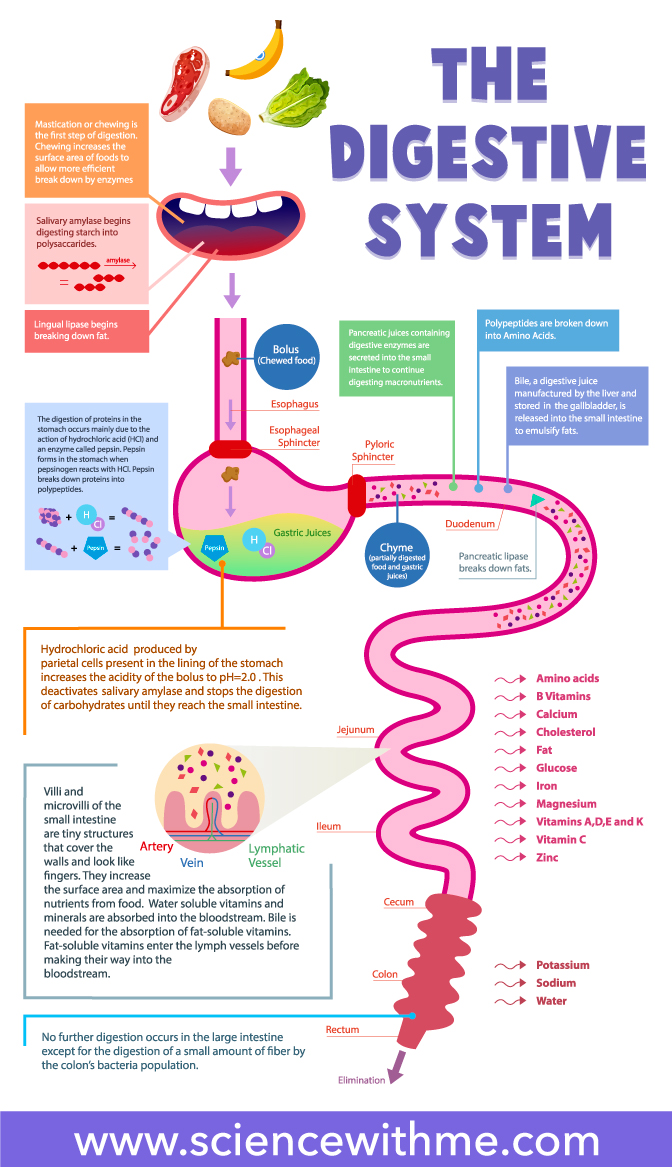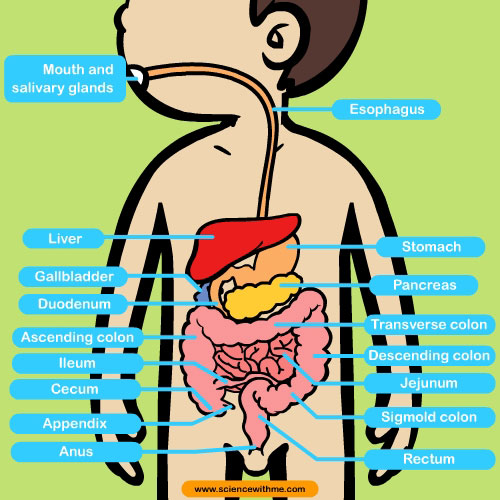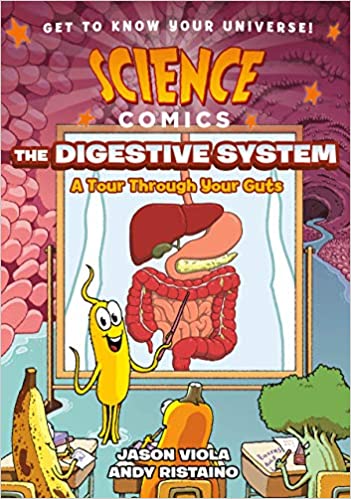The digestive system is the process by which our body, organs and chemicals break down the food which we eat.

Which body parts (Organs) are used in the digestive Process?
The mouth: is where you chew your food and it is also where the process of digestion actually begins. By mushing food down thoroughly with your teeth, food matter is made smaller and, therefore, easier for your body to digest. The more the food is chewed, the less trouble the digestive system will have on the way down. There are also salivary glands in the mouth which squirt out digestive juices onto your food. These digestive juices contain substances that break the food down even further before it gets pushed on towards the stomach. The oesophagus: is a muscular tube that leads from your mouth to your stomach. It is about 10 inches long. Once food enters it, the muscles in the wall of the oesophagus start to push the mushy bolus down into the stomach by waves called peristalsis. This takes from 2-3 seconds. Peristalsis, which will continue to push food through the digestive tract and out as waste, occurs every few seconds and can be likened to waves coming on the ocean. In the stomach, more digestive juices - now called gastric juices - will be released to further break down the food. These juices contain a digestive enzyme - called pepsin - and a very important acid called hydrochloric acid, or HCL. HCL deals with any bad bacteria and generally unwanted substances in your food - which is good - but is strong enough to eat through human tissue - which is bad. Happily, the stomach has a special lining, called a mucosa, which is designed to protect it from being destroyed while allowing the HCL to do its job. The other job of the stomach is to churn your food around to mix it up with the digestive juices and any liquid - water, juice - which you have sent down with it. Food is churned around in the stomach for about 4 hours after you eat. Then, it is ready to move on through the digestive tract.
 The Digestive Tract (the small intestine) is about 22 feet long but is called the small intestine because it is only about 1 -2 inches around. (The large intestine, or colon, has about twice the diameter of the small intestine.) The work of this part of the digestive system takes about 4 hours from start to finish. The small intestine continues to break food down until it is small enough to pass out into the blood stream. The blood stream carries the nutrients - the final products of the digestive process - to the parts of the body where they are required.
The Digestive Tract (the small intestine) is about 22 feet long but is called the small intestine because it is only about 1 -2 inches around. (The large intestine, or colon, has about twice the diameter of the small intestine.) The work of this part of the digestive system takes about 4 hours from start to finish. The small intestine continues to break food down until it is small enough to pass out into the blood stream. The blood stream carries the nutrients - the final products of the digestive process - to the parts of the body where they are required.
How does the digestive system treat different food groups?
Different types of food - such as carbohydrates, proteins and fats - require different amounts of time to be broken down and pushed out of the digestive tract. Also, the small intestine gets help from the pancreas and the liver. Although these two organs are not actually found in the digestive tract, they are considered part of the digestive system. Their function is to send digestive juices into various parts of the small intestine and help with the food breakdown process. The gall bladder, which stores bile, is also considered a part of the digestive system. This bile will be sent to the liver and will be used to break down fatty foods. It is like a distant storage warehouse full of supplies to help the digestive system do its work.
What happens to any undigested food?
Finally, any undigested food that is left at the end of the small intestine is considered waste and enters into the colon. This is shorter than the small intestine but, as we mentioned earlier, much thicker in diameter. Waste products can remain in the colon for up to a day or two before they are moved out as a bowel movement.
Interesting Facts about the Digestive System
- The mouth produces 1.7 liters of saliva per day.
- We eat about 500kg of food per year.
- An adult’s stomach can hold approximately 1.5 liters of material.

